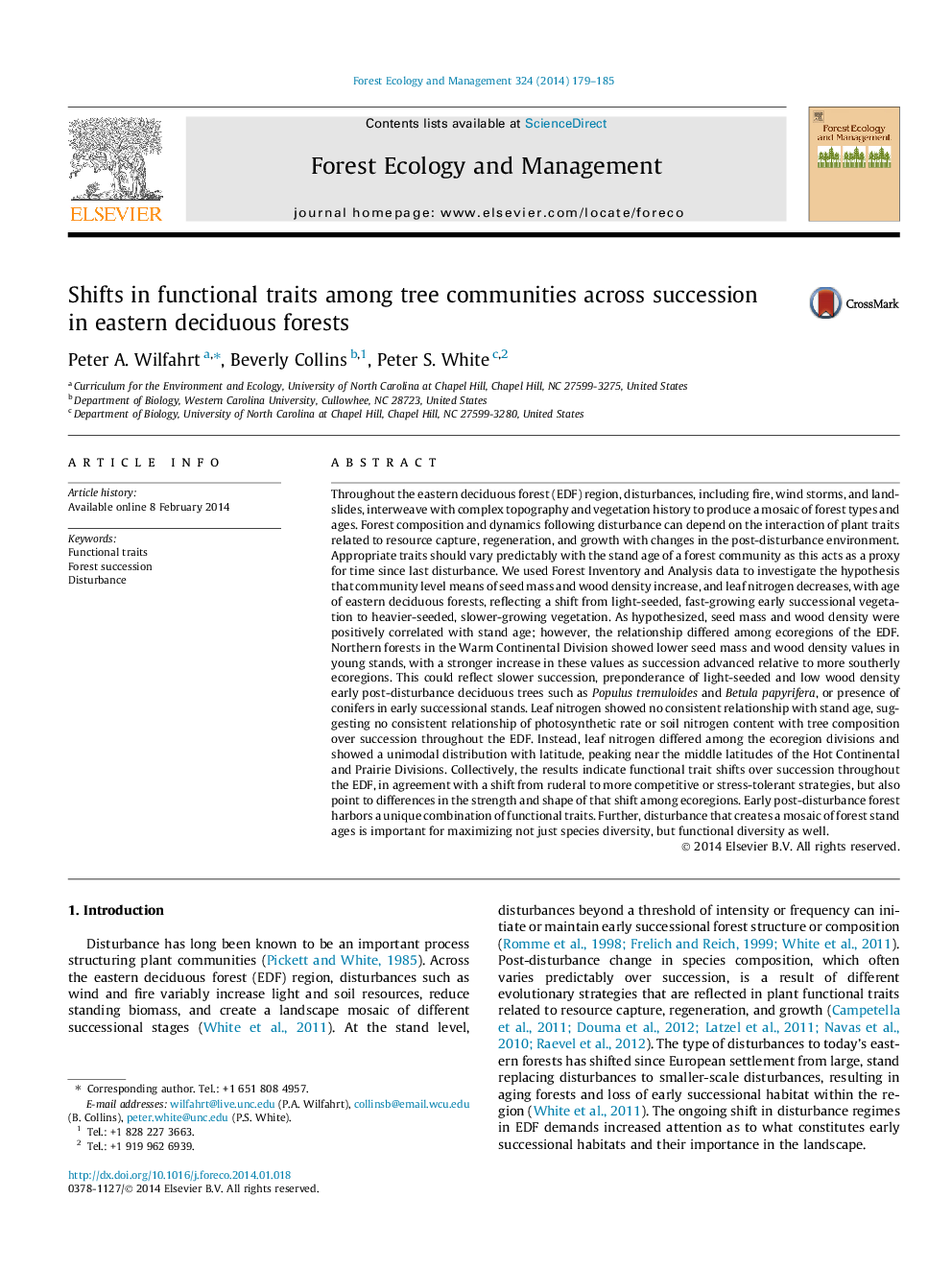| کد مقاله | کد نشریه | سال انتشار | مقاله انگلیسی | نسخه تمام متن |
|---|---|---|---|---|
| 86615 | 159200 | 2014 | 7 صفحه PDF | دانلود رایگان |
• We investigate the relationship of tree species traits with succession and latitude.
• Seed mass increases with stand age and this trend is strongest at high latitudes.
• Wood density increases with stand age, although only at the highest latitudes.
• Leaf nitrogen does not respond to stand age, but does to latitude and ecoregion.
Throughout the eastern deciduous forest (EDF) region, disturbances, including fire, wind storms, and landslides, interweave with complex topography and vegetation history to produce a mosaic of forest types and ages. Forest composition and dynamics following disturbance can depend on the interaction of plant traits related to resource capture, regeneration, and growth with changes in the post-disturbance environment. Appropriate traits should vary predictably with the stand age of a forest community as this acts as a proxy for time since last disturbance. We used Forest Inventory and Analysis data to investigate the hypothesis that community level means of seed mass and wood density increase, and leaf nitrogen decreases, with age of eastern deciduous forests, reflecting a shift from light-seeded, fast-growing early successional vegetation to heavier-seeded, slower-growing vegetation. As hypothesized, seed mass and wood density were positively correlated with stand age; however, the relationship differed among ecoregions of the EDF. Northern forests in the Warm Continental Division showed lower seed mass and wood density values in young stands, with a stronger increase in these values as succession advanced relative to more southerly ecoregions. This could reflect slower succession, preponderance of light-seeded and low wood density early post-disturbance deciduous trees such as Populus tremuloides and Betula papyrifera, or presence of conifers in early successional stands. Leaf nitrogen showed no consistent relationship with stand age, suggesting no consistent relationship of photosynthetic rate or soil nitrogen content with tree composition over succession throughout the EDF. Instead, leaf nitrogen differed among the ecoregion divisions and showed a unimodal distribution with latitude, peaking near the middle latitudes of the Hot Continental and Prairie Divisions. Collectively, the results indicate functional trait shifts over succession throughout the EDF, in agreement with a shift from ruderal to more competitive or stress-tolerant strategies, but also point to differences in the strength and shape of that shift among ecoregions. Early post-disturbance forest harbors a unique combination of functional traits. Further, disturbance that creates a mosaic of forest stand ages is important for maximizing not just species diversity, but functional diversity as well.
Journal: Forest Ecology and Management - Volume 324, 15 July 2014, Pages 179–185
